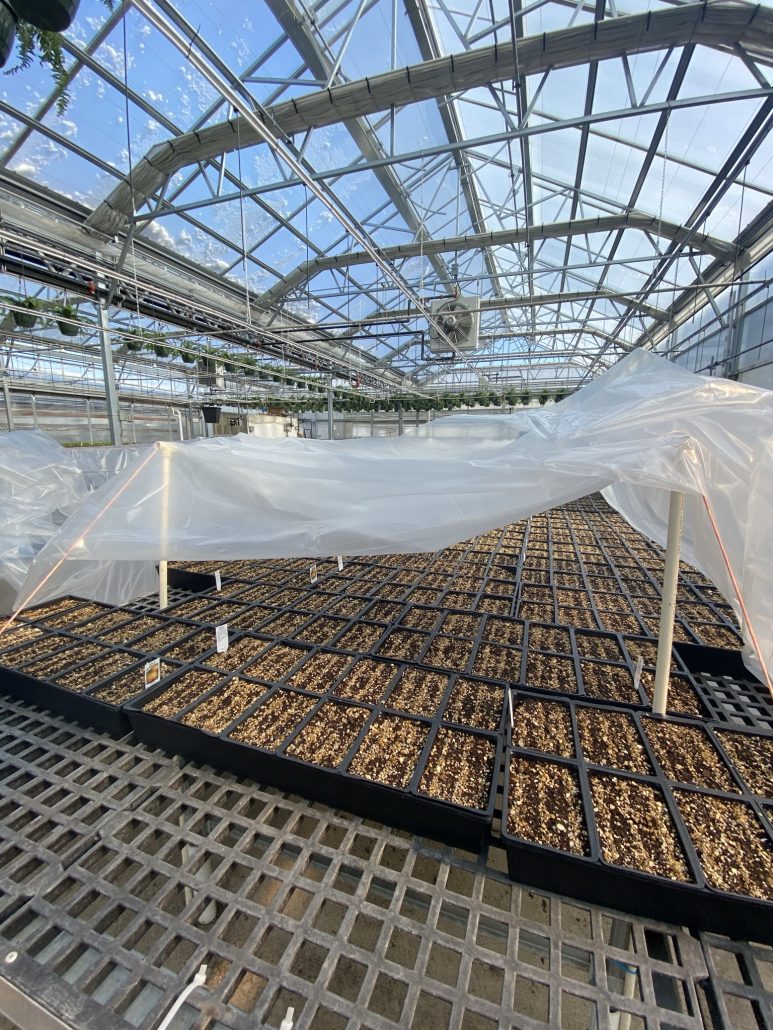Onion Week is Here!

Onions are classified 3 different ways: long-day, day-neutral, and short-day (based on the amount of daylength they need to form bulbs). Since we live in the northern tier of the continental U.S., we grow long-day onions, as we have 14-16 hours of daylength during the summer.
There are multiple different ways to plant onions including from seed, live plants, dormant starts, and bulbs or “sets”. This week we will be busy seeding over 240 flats of onions! After they have been seeded, we lay them out on a bench under a plastic tent to promote the best germination conditions.
We seed our onions this week so that they will be ready for you to transplant come April and May. One pack of our onions contains approximately 25 plants. When transplanting them out, gently tease them apart and space approximately 4” inches apart to get a bigger bulb size. Onions prefer a nice sandy loam soil that drains well; however, they do not like to dry out and prefer 1” of water per week. If irrigating, it is best to use drip irrigation to prevent foliar diseases.
When about half of the onion tops have fallen over it’s time to harvest! Simply, pull them out of the ground and let them dry in the sun or a shed for 2-7 days. You can layer the tops over the bulbs to prevent sunscald. After they have dried down, trim the tops off to about 1” and store them in a cool, dark place. Typically, the more pungent the onion the longer it will store, but you should still go through your onions every few weeks to cull out the bad ones.
Wishing you a successful onion crop this year!


